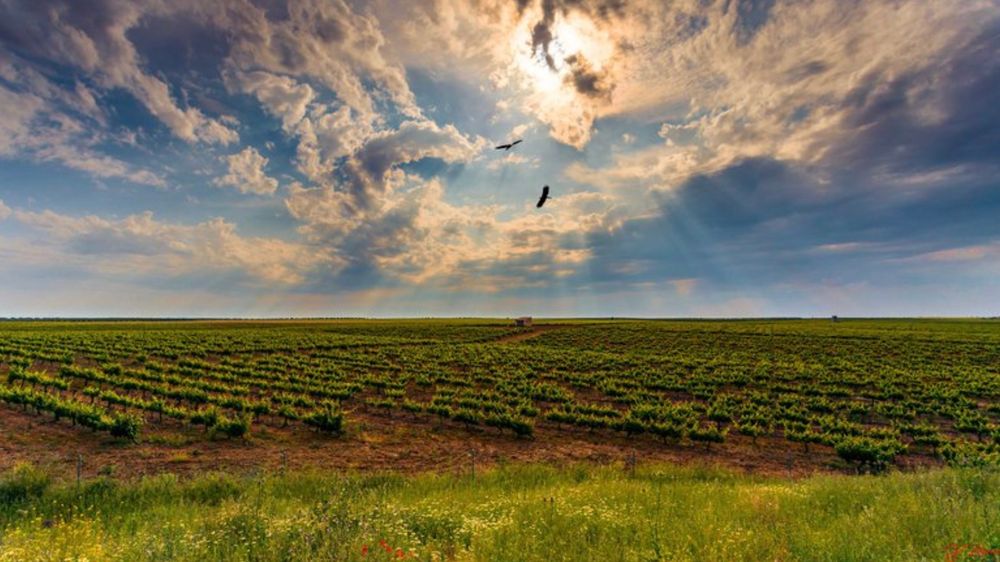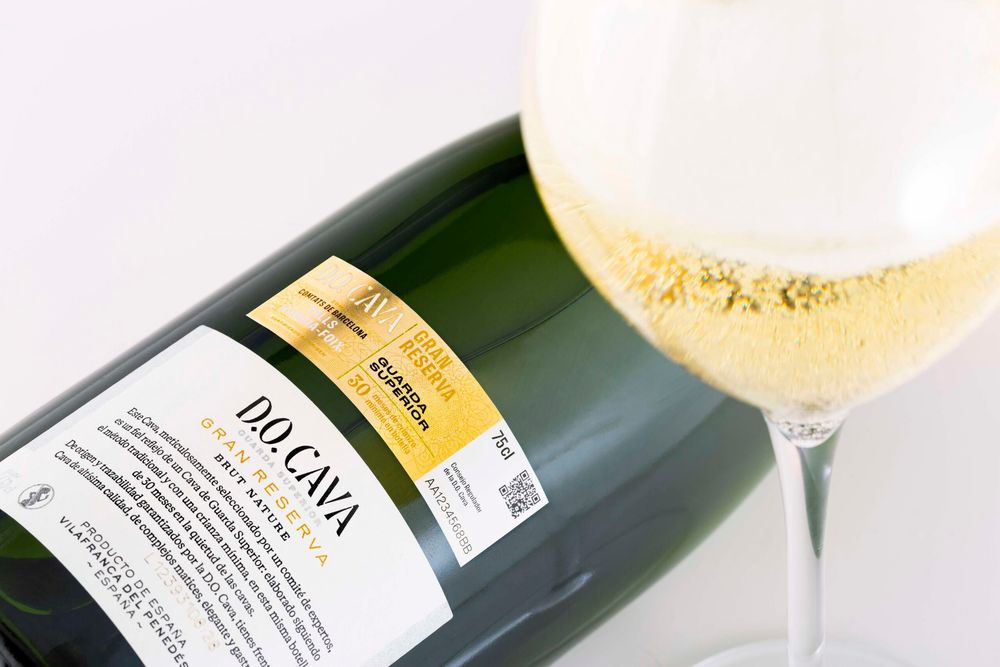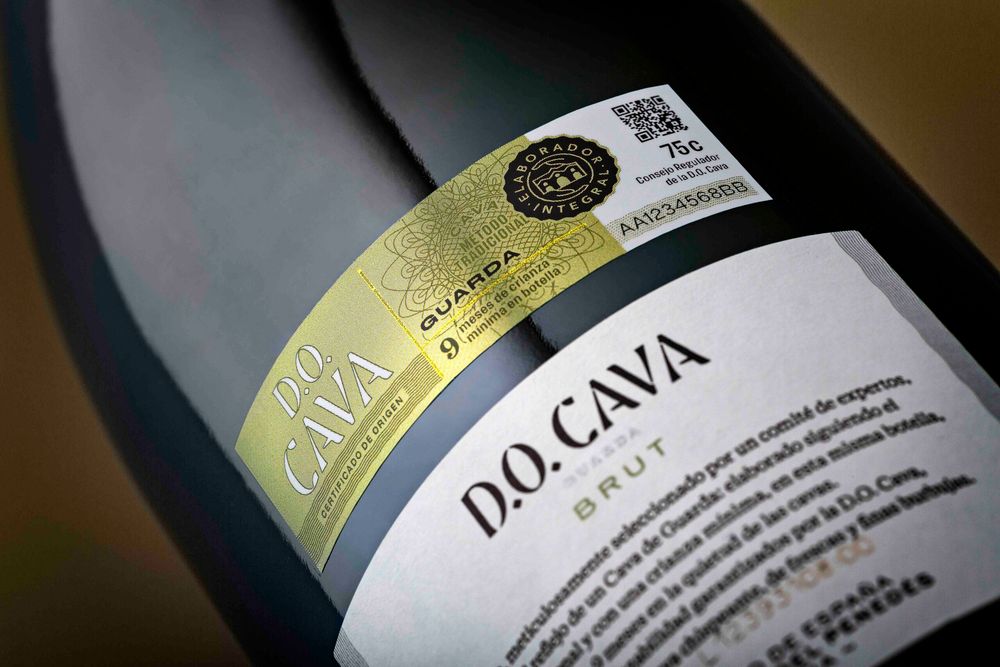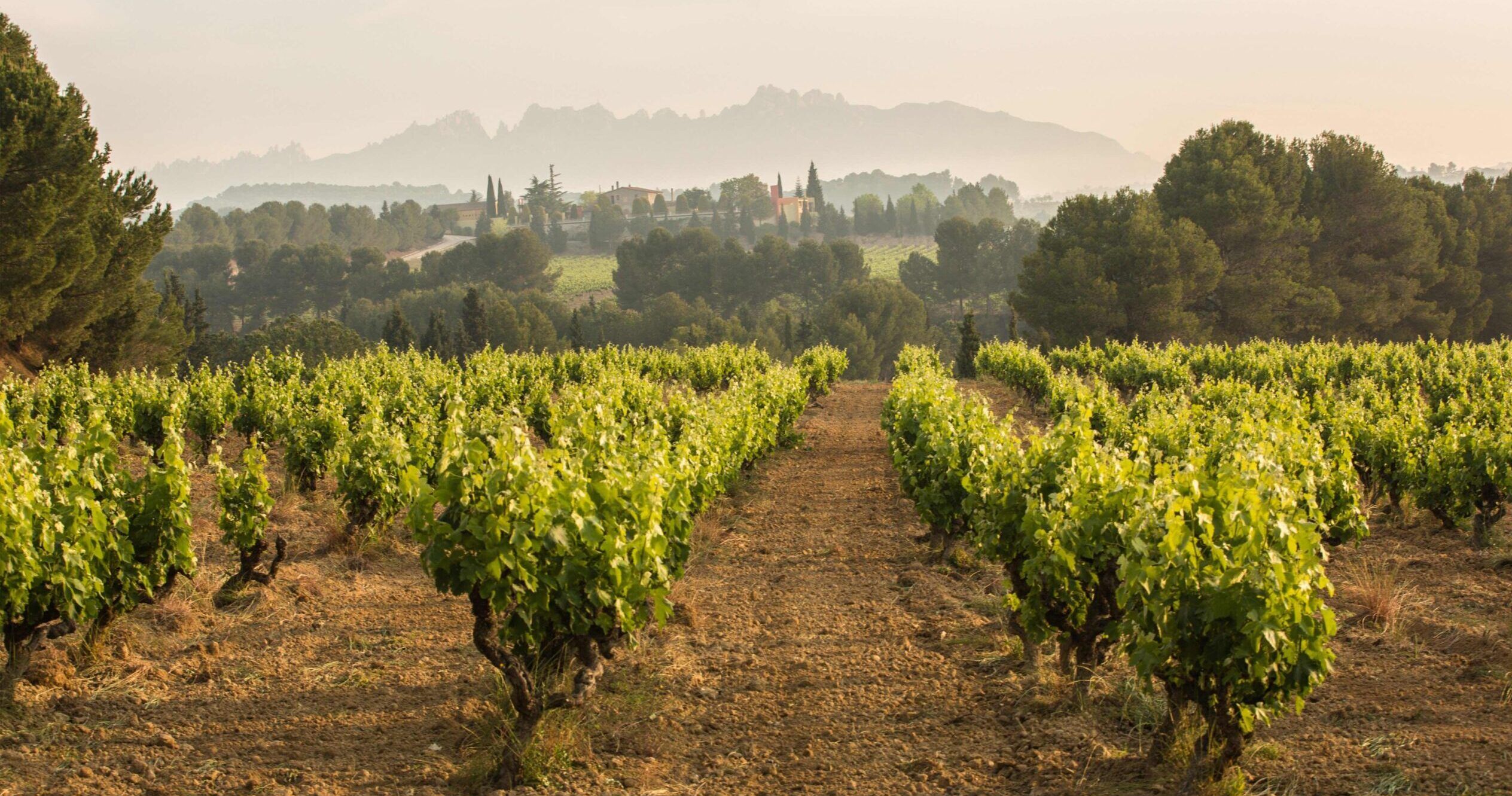If you haven’t dipped into Cava recently, you might not have heard about the changes afoot in the D.O. Read on for all you need to know.
Where does Cava come from?
There is a misconception that D.O. Cava is a non-geographical appellation. In fact, there are just four tightly defined regions in Spain which are allowed to make Cava:

The four zones across Spain that are designated to make Cava with the vast majority coming from Comtats de Barcelona
- Comtats de Barcelona – this growing area in Penedès, Catalunya, is where Cava production started and where the majority of it (over 95%) still comes from. Production has traditionally centered on the town of Sant Sadurni d’Anoia and vines stretch out over the rolling hills of the Montserrat mountain, bordered by higher ranges of hills and the Mediterranean sea. The climate is, unsurprisingly, largely Mediterranean, with some more continental influences away from the coast. Vineyards can be planted at altitudes of up to 750 metres.
However, there are three other areas which, for historical reasons, also have the right to produce traditional method sparkling wines as part of the D.O. Cava. These are much less common in the UK market, though you might occasionally come across a Cava made by a Rioja producer.
- Valle del Ebro: specific areas along the Ebro river, largely within Rioja DOCa, and two small areas around Zaragoza.

Viñedos de Almendralejo is one of four zones in Spain that is allowed to make Cava
- Viñedos de Almendralejo: in Extremadura in southwestern Spain.
- Zona de Levante: a high plateau inland from Valencia at altitudes of between 600 and 900 metres. This zone is to be renamed from the beginning of 2024 as Requena.
The names of these zones can now be included on the official D.O. Cava seal, enabling consumers to know more about the geographical origin of their wine. Illustrating the D.O.’s push for greater focus on the origin of its wines, for those higher quality levels (Reserva and above) producers can also include the name of a sub-zone on the seal if all of the grapes originate from there.
In Comtats de Barcelona, you might come across the sub-zones Valls d’Anoia-Foix, Serra de Mar, Conca de Gaià, Serra de Prades or Pla de Ponent.
What grape varieties can be used in a Cava?
Cava may share its high-quality production method with Champagne, but it has its own distinct personality, thanks in part to the range of grape varieties that growers can choose from.
Xarel.lo is perhaps the emblematic autochthonous variety of Comtats de Barcelona and makes wines with structure, finesse and a typical earthy character. It makes wines which can age superbly.

The grape variety Macebo is one of three varieties that are used in making traditional Cava
Macabeo (also known as Viura elsewhere in Spain) is the most planted variety in the D.O. It can also age well despite moderate acidity and brings a lightly floral dimension to the wines.
Parellada provides a delightful aromatic fruitiness and excels when planted at higher altitudes.
Together, these three varieties form the classic trio of grapes which make up the traditional Cava coupage (or blend).
Growers also have the option to work with the international varieties of Chardonnay and Pinot Noir. In addition, Rosé Cava is often made from Garnacha Tinta, Monastrell and/or local distinctive variety Trepat. Local rarity, the white Subirat Parent, completes the picture.
What are the new ageing categories?
There are now official ageing categories for all Cavas, standardised across all producers.
Cava de Guarda – these are wines that have aged for a minimum of nine months on the lees. They are youthful sparkling wines, with the emphasis on liveliness and freshness of fruit. Close to 87% of Cava production falls into this category and it accounts for the vast majority of the Cava that is consumed in the UK.
However, there are longer aged categories to tempt discerning drinkers to explore the full range of Cava wines.
Cava de Guarda Superior is a category which covers all Cavas aged for a minimum of 18 months. Vines used for these wines must also be at least 10 years old and the maximum yield is set at 10,000 kg per hectare. The year of harvest must feature on the label, meaning these are all vintage dated Cavas.
Within the Cava de Guarda Superior category, there are three levels of ageing:

The Cava de Guarda Superior category has three different levels of ageing
- Cava de Guarda Superior Reserva – aged for a minimum of 18 months. 11.5% of production is at this level, and it is showing strong growth.
- Cava de Guarda Superior Gran Reserva – aged for a minimum of 30 months. Currently Cava Reserva represents just 1.7% of total production.
- Cava de Guarda Superior de Paraje Calificado – aged for a minimum of 36 months. These special and rare wines come from a specific vineyard location, with a maximum yield of 8,000 kg per hectare and 48 hectolitres per hectare, and the grapes must be picked by hand. The wines must also be made on the estate and undergo a tasting by a specific committee supervised by D.O. Cava in order to earn the Paraje Calificado seal. This new classification of Cava, currently a smaller part of overall production due to its high standards, is where producers are now focused. As of today, just six wineries between them are proudly producing 1o Cavas which qualify for the Paraje Calificado seal.
As these Cavas de Guarda Superior age, they develop more complex aromatic profiles. The initial vivid fresh fruit begins to fall away, to be replaced by typical aromas of bottle aged traditional method wines, such as toasted nuts, truffle and dried fruits.
What about going organic?
In a move which speaks to the D.O.’s confidence and determination to focus on quality and sustainability, all Cava de Guarda Superior will have to be certified organic by 2025 in order to qualify for the classification. Organic Cava currently accounts for 12.6% of total production from the D.O.’s 38,000 hectares of vines – a percentage which is set to increase as we approach the deadline.
How do you spot the different kinds of Cava?

Different coloured quality seals on the label have been introduced to identify the quality level of the wine – like here with a green seal for Cava de Guarda.
D.O. Cava is rolling out quality seals so that each bottle of Cava is clearly identified by quality level of the wine, colour-coded to make identification easy. Cava de Guarda carries a green seal, Cava de Guarda Superior Reserva is silver and that for Cava de Guarda Superior Gran Reserva is gold.
In addition, you might see an integral producer (“elaborador integral”) stamp, which means that the winery has carried out all of the pressing and vinification at their own premises.
Tradition and history both have important roles to play in DO Cava, but it’s clear that in recent years they have been complemented by a desire to move the DO on towards premiumisation, via the new ageing categories, zonification, the move to organic and greater traceability of the wines.
- You can find out more about D.O. Cava at its website here.
- Click here to access all the wineries in the D.O. Cava.
- Heather Dougherty is a certified Cava educator.
- This article has been produced in partnership with D.O.Cava.

































